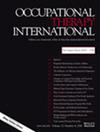Usability of Public Play Spaces for Children with Disabilities
IF 0.9
4区 医学
Q3 REHABILITATION
引用次数: 0
Abstract
Purpose. To investigate the usability of public play spaces for children with disabilities by exploring their experiences in accessing and using these spaces and to further discuss recommendations for designing such spaces that are usable for these children. Methods. A hermeneutic phenomenological approach was employed to explore the experience of children with disabilities regarding the public play spaces. Seven children and their caregivers from two inclusive elementary schools in Central Java Province, Indonesia, participated in the study. Online semistructured interviews with the children were held using Zoom, followed by telephonic interviews with their parents. In addition, video recordings of the observation of the children’s participation in the play spaces were gathered. The interview and video observation data were analyzed using van Manen’s hermeneutic phenomenology thematic analysis method. Results. Five themes arose regarding the experiences of children with disabilities of accessing and using the public play spaces: (1) where time appeared to speed up, (2) “I like the tall one … I like extreme,” (3) fostering connectedness, (4) the need for a safe space, and (5) how a play space should be. Conclusion. The public play spaces have meaningful values for the children with disabilities and their family, as they offered the opportunities to play, explore, interact with friends and families, enjoy nature, interact with animals, and learn. However, it is essential to provide a safe space in which children are free from physical and emotional harm, so that they can fully participate with confidence and a sense of autonomy. Nevertheless, it was also found that children, regardless of their abilities, craved risky and challenging play opportunities. This study also highlights the necessity of awareness-raising intervention programs to foster the inclusion of children with disabilities in public play space settings.残疾儿童公共游乐场所的可用性
目的通过探究残疾儿童进入和使用公共游戏空间的经验,调查这些空间对残疾儿童的可用性,并进一步讨论为残疾儿童设计此类空间的建议。研究方法。采用诠释学现象学方法探讨残疾儿童在公共游戏空间方面的体验。来自印度尼西亚中爪哇省两所全纳小学的七名儿童及其看护人参与了研究。研究人员使用 Zoom 对这些儿童进行了在线半结构式访谈,随后又与他们的父母进行了电话访谈。此外,还收集了观察儿童参与游戏空间的视频记录。访谈和视频观察数据采用 van Manen 的诠释现象学主题分析方法进行分析。分析结果关于残疾儿童进入和使用公共游戏空间的经历,产生了五个主题:(1)时间似乎在加速,(2)"我喜欢高个子......我喜欢极端",(3)促进联系,(4)对安全空间的需求,以及(5)游戏空间应该是怎样的。结论。公共游戏空间对残疾儿童及其家庭来说具有重要价值,因为它们提供了游戏、探索、与朋友和家人互动、享受自然、与动物互动和学习的机会。然而,必须提供一个安全的空间,使儿童免受身体和精神伤害,这样他们才能带着自信和自主感充分参与。然而,研究也发现,儿童无论能力如何,都渴望有风险和挑战性的游戏机会。本研究还强调,有必要开展提高认识的干预项目,以促进残疾儿童融入公共游戏空间环境。
本文章由计算机程序翻译,如有差异,请以英文原文为准。
求助全文
约1分钟内获得全文
求助全文
来源期刊

Occupational Therapy International
REHABILITATION-
CiteScore
2.50
自引率
6.70%
发文量
121
审稿时长
>12 weeks
期刊介绍:
Occupational Therapy International is a peer-reviewed journal, publishing manuscripts that reflect the practice of occupational therapy throughout the world. Research studies or original concept papers are considered for publication. Priority for publication will be given to research studies that provide recommendations for evidence-based practice and demonstrate the effectiveness of a specific treatment method. Single subject case studies evaluating treatment effectiveness are also encouraged. Other topics that are appropriate for the journal include reliability and validity of clinical instruments, assistive technology, community rehabilitation, cultural comparisons, health promotion and wellness.
 求助内容:
求助内容: 应助结果提醒方式:
应助结果提醒方式:


